Here and There 2018 Program Notes |
|
Zeitgeist
Heather Barringer and Patti Cudd, percussion; Pat O’Keefe, woodwinds; Nikki Melville, piano No Exit New Music Ensemble Sean Gabriel, flute; Cara Tweed, violin; James Rhodes, viola; Nick Diodore, cello; Luke Rinderknecht, percussion; Timothy Beyer, Artistic Director; James Praznik, Associate Director Artist Statement: Throughout our history, Zeitgeist has championed the work of composers in our community, commissioning, developing, and premiering hundreds of works by Minnesota composers. Cleveland based No Exit New Music Ensemble boasts a similar passion with regard to their local artists. Both groups recognize that while creating work with artists near at hand is essential to creating a vibrant musical community, our work also becomes richer when we welcome new ideas into our midst, and increases in its impact when we share it with audiences near and far. Here and There is part of an artistic partnership between Zeitgeist and No Exit through which we will engage in the import and export of musical ideas between our two communities. Both ensembles will present in both cities, performing and developing work by Minnesota and Ohio composers and introducing audiences and artists to new musical possibilities. Together, we’ll learn more about what makes each community unique, what we have in common, how we differ, what we can share, and what we might take away. Notes & Bios
Since it’s inception, No Exit’s mission has been to serve as an outlet for the commission and performance of contemporary avant-garde concert music. Now in their ninth season and with over fifty commissions to date, No Exit continues to promote the music of living composers and to be an impetus for the creation of new works. They create exciting, meaningful and thought-provoking programs with the philosophy of bringing the concert hall to the community, and by presenting programs in a manner which allows for audiences to connect with the experience.
The ensemble has presented music that represents the gamut of the avant-garde: from the impish and mirthful jazz stylings of Raymond Scott to the cerebral hypercomplexity of Brian Ferneyhough (and just about everything in between). They give voice to those composers who have something to say, whether they be young composers at the beginning of their journey, established composers at the height of their abilities, or venturing into the past by exploring new ways of sharing the unconventional and innovative music of the early twentieth century’s artistic vanguard, which led to the commission of exciting contemporary re-imaginings of music by Erik Satie and Eric Dolphy, to name a few. While No Exit has brought their work to other national and international locales, their emphasis is on serving the community in Northeast Ohio. No Exit has formed many longstanding and fruitful partnerships with individuals and organizations in the Greater Cleveland area to bring unique programming to audiences in Northeast Ohio and to nurture the development of young composers and musicians from the area through workshops, student readings and master classes. 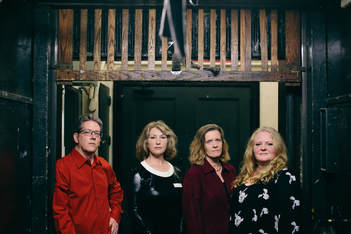
Lauded for providing “a once-in-a-lifetime experience for adventurous concertgoers,” Zeitgeist is a new music chamber ensemble comprised of two percussion, piano and woodwinds. One of the longest established new music groups in the country, Zeitgeist commissions and presents a wide variety of new music for audiences in the Twin Cities and on tour. Always eager to explore new artistic frontiers, Zeitgeist collaborates with poets, choreographers, directors, visual artists and sound artists of all types to create imaginative new work that challenges the boundaries of traditional chamber music. More
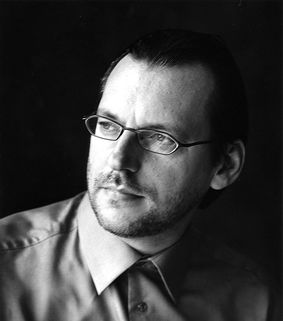
Composer Andrew Rindfleisch (b.1963) has enjoyed a career in music that has also included professional activity as a conductor, pianist, vocalist, improviser, record producer, radio show host, educator, and concert organizer. As a composer, he has produced dozens of works for the concert hall, including solo, chamber, vocal, orchestral, brass, and wind music, as well as an unusually large catalog of choral music. His committed interest in other forms of music-making have also led him to the composition and performance of jazz and related forms of improvisation. Mr. Rindfleisch is the recipient of the Rome Prize, a John Simon Guggenheim Fellowship, the Aaron Copland Award, and the Koussevitzky Foundation Fellowship from the Library of Congress. Over forty other prizes and awards have followed honoring his music.
American Monster by Andrew Rindfleisch is a new work for Zeitgeist, No Exit New Music Ensemble, Transient Canvas, Arts Futura, trumpeter Jon Nelson, trombonist Paul Ferguson, and pianist Geoffrey Burleson.
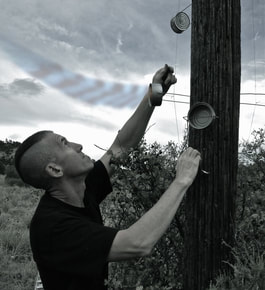
Philip Blackburn was born in Cambridge, England, and studied music there as a Choral Scholar at Clare College. He earned his Ph.D. in Composition from the University of Iowa where he studied with Kenneth Gaburo and began work on publishing the Harry Partch archives. Blackburn's book, Enclosure Three: Harry Partch, won an ASCAP Deems Taylor Award. He has worked at the American Composers Forum since 1991, running the innova Recordings label and developing re-granting programs and opportunities for composers.
He is also a composer/environmental sound artist and has served as teaching artist for school residencies connected with the Flint Hills International Children’s Festival, creating multimedia performances using home-made instruments. Blackburn has published articles on topics such as Vietnamese, Garifuna, and Cuban music, the social dynamics of ensemble performance, and the use of sound in public art. He received a 2003 Bush Artist Fellowship and built an art-house in Belize. Melody by Philip Blackburn
For vibraphone and fixed media (2017) Melody is a study in translation; in this case a recording of one of my backyard windharps (think fishing line attached to a resonator) combined with an instrumental realization of it. One weather input; two audio outs. The conversion of fluctuating wind energy to sound, from ongoing to finite duration, from ambient installation to composition, from just intonation to equal temperament, from Aeolian drones to fixed rhythms, from environmentally generated material to practiced human virtuosity; Melody occupies a place with one ear on the concert stage and the other out of doors, coexisting in tension and harmony. While there are plentiful tunes and synchronous moments of clarity and density, the melody of the title refers to Melody Scherubel, widow of composer Robert Paredes who would have enjoyed this sort of thing and probably described it as windchimes on steroids. 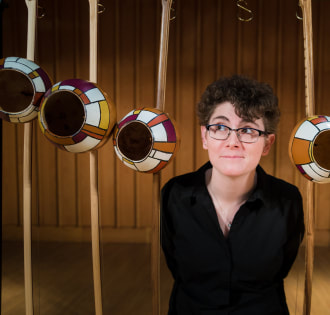
Alexis C. Lamb (b. 1993) is a composer, percussionist, and educator who is interested in fostering communities of positive and genuine music-making. She is the Education and Publications Director for Arcomusical, a non-profit organization that advocates for the artistic advancement of the Afro-Brazilian berimbau and related musical bows (www.arcomusical.com). Arcomusical’s first album, MeiaMeia, made the ballot round for 2018 Grammy consideration. It is released on Innova Recordings and can be found here.
Lamb was a recipient of the 2018 ASCAP Foundation Morton Gould Young Composer Award for Meia, her solo-through-sextet song cycle for berimbau. Lamb’s research on the history and traditional use of the berimbau in Brazil earned her a first place prize at the Northern Illinois University Undergraduate Research and Artistry Day in 2013. Lamb also received the Undergraduate Special Opportunities in Artistry and Research (USOAR) Grant and the Honors Enhance Your Education (EYE) Grant for her work with the berimbau. Lamb will begin a Master of Music in Composition at Yale University in fall 2018. She graduated Summa Cum Laude with two Bachelor of Music degrees in Music Education and Percussion Performance from Northern Illinois University. Her major teachers include Gregory Beyer, Michael Mixtacki, Robert Chappell, David Maki, Brian Penkrot, and Lauren Ryals. When not working on music, she can be found playing board games at an overly competitive level, teaching her two cats new tricks, or making walrus tusks out of food/utensils. Her superpower is driving long distances without getting tired. The North Star by Alexis Lamb serves as a historical and cultural tour of Minnesota’s main industries: logging, mining/shipping, agriculture, and manufacturing/technology. Inspired by traditional folk music, cultural records, state anthems, and binary and Morse codes, this work celebrates Minnesota and its important contributions to the United States, past and present. The North Star was composed for Zeitgeist, a Minnesota-based musical icon.

Jerome Kitzke lives in New York City but grew up along the southwestern shore of Lake Michigan in Milwaukee, where he was born in 1955. Since his first work in 1970, he has thought himself to be as much a storyteller as he is a composer. Some of the stories are about life's personal roads, like The Redness of Blood and Sunflower Sutra which both express the composer's love for his blood family. Many, however, like Haunted America and The Paha Sapa Give-Back are about the roads that go looking for what it means to be an American early in the 21st Century, especially as it relates to the connection between how we live on this land and the way we came to live on it. Kitzke's music celebrates American Vitality in its purest forms. It thrives on the spirit of driving jazz, Plains Indian song, and Beat Generation poetry, where freedom and ritual converge. It is direct, dramatic, and visceral — always with an ear to the sacred ground.
His music has been performed in North and South American, Europe, Asia, the Middle East and Australia by many different ensembles and soloists, including Mr. Kitzke himself, and has been featured twice on WNYC’s New Sounds Live with John Schaefer. Mr. Kitzke has been a fellow at the MacDowell Colony, Yaddo, the Millay Colony, the Civitella Ranieri Center, the Copland House, the Bellagio Study and Conference Center, the Ucross Foundation, the Brush Creek Foundation, Banff, VCCA, Djerassi and the Ledig House. In 2005, he was the Macgeorge Fellow at the University of Melbourne in Australia, where he appeared on ABC Radio’s The Morning Show with Andrew Ford. He was a 2010 recipient of a Rockefeller Multi Arts Production Grant for his piece, Buffalo Nation (Bison bison), commissioned by Present Music and premiered by them in April 2012. In 2013 his 1999 CD The Character of American Sunlight was rereleased on the Innova label and his new CD The Paha Sapa Give-Back was released on the Innova label in July 2014. Interviews of Mr. Kitzke appeared early in 2015 in New Music Box with Frank Oteri and Fanfare Magazine with Robert Carl. In November of 2015, Tribeca New Music presented two concerts of Mr. Kitzke’s music at the DiMenna Center for Classical Music in New York City in honor of his 60th birthday. Included was the premiere of For Pte Tokahewin Ska, an honor piece for Kitzke’s friend, the Oglala Lakota activist Charlotte Black Elk. In the summer of 2017 the Fales Library’s Downtown Collection at NYU in New York City began archiving Kitzke’s life’s work. In October of 2017 he was a Director’s Guest Fellow at Civitella Ranieri in Umbria in Italy. In October of 2018 Treibeca New Music presented a concert of Kitzke’s complete repertoire for amplified speaking pianist (1994-2009) as well as the premiere of A Lament and Cry for These United States, for pianist Kathleen Supove and oboist Keve Wilson. Currently he is writing a piece for NakedEye Ensemble from Lancaster, PA. His music is recorded on the Innova, New World, Starkland, and Mode labels and published by Peer Music in New York and Hamburg. In Bone Colored Light by Jerome Kitzke
In Bone-Colored Light (2002), Kitzke's second work for Zeitgeist, pays homage to the sense of clarity and healing found in the stark and pure angled light that illuminates the American landscape of a late afternoon on a cloudless day. 
Julius Eastman (1940-1990) was an artist who, as a gay, black man, aspired to live those roles to the fullest. He was not only a prominent member of New York's downtown scene as a composer, conductor, singer, pianist, and choreographer, but also performed at Lincoln Center with Pierre Boulez and the New York Philharmonic, and recorded experimental disco with producer Arthur Russell. 'Eastman is something of a cult figure among composers and singers', reads a 1980 press release.
Despite his prominence in the artistic and musical community in New York, Eastman died homeless and alone in a Buffalo, NY hospital, his death unreported until eight months later, in a Village Voice obituary by Kyle Gann. He left behind few scores and recordings, and his music lay dormant for decades until a three-CD set of his compositions was issued in 2005 by New World Records. In the years since, there has been a steady increase in attention paid to his music and life, punctuated by newly found recordings and manuscripts, the publication of Gay Guerrilla, a comprehensive volume of biographical essays and analysis, worldwide performances and new arrangements of his surviving works, and newfound interest from choreographers, scholars, educators, and journalists. 'The brazen and brilliant music of Julius Eastman…commands attention: wild, grand, delirious, demonic, an uncontainable personality surging into sound', writes Alex Ross for The New Yorker. Stay on It by Julius Eastman
Eastman wrote Stay on It in 1973, during the time that he lived in Buffalo and was working with the Creative Associates. The work is derived almost entirely from one musical riff and features ever more abandoned improvisation. 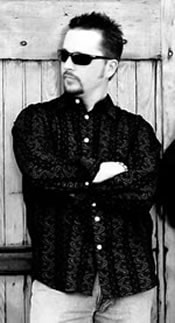
Louisville Courier-Journal music critic Andrew Adler wrote of Ty Alan Emerson’s piano trio Dedications that it “possessed surprising emotional resonance and was quite expertly wrought.” Cleveland radio personality and music critic Eric Kisch stated, “This is a young man with a great future ahead of him. I look forward to many musical experiences from his pen.”
Composer Ty Alan Emerson has been presenting music in Cleveland since 2000. Following two terms as president of the Cleveland Composers’ Guild, he is currently Director for the Cleveland Chamber Collective. He has been commissioned by the Collective, No Exit, ASSEM3LY, with other notable performances by Quorum, Gary Louie, and The Peabody Wind Ensemble. His work has been featured at music festivals from Bowling Green, OH to Huddersfield, England. In addition to his work for the concert hall, Emerson has composed and arranged works for the stage including several shows with The Musical Theater Project in Cleveland, and a season with the Texas Shakespeare Festival. Notable awards include: MTNA/OMTA Composer of the Year, two Individual Excellence Awards from the Ohio Arts Council, and the ASCAP Morton Gould Award. Most recently his Prospero on the Beach was featured on a CD by ASSEM3LY, available through Albany Records. Homage to Lou by Ty Emerson was composed in honor of Lou Harrison's Centennial Celebration performance by the Cleveland Chamber Collective. It is fashioned after Harrison's Varied Trio with similar structures and performing forces. Lou was eclectic and his various musical experiences informed his own writing, some overtly, some more subtly. Without trying to rewrite Lou, I looked for musical ideas that resonated with me, and brought them into this setting, while still maintaining my own voice.
1. Buena Vista 2. Galliarde and Passamezzo 3. Penta-Streams 4. Plaint and Stomp Darkling, I Listen by Ty Emerson was commissioned by No Exit in honor of their 10th season. The title comes from a line of Ode to a Nightingale by John Keats. The poem is allegorical and can be read many ways, but when I encountered the poem this time, I was dealing with real death and illness, anxiety and uncertainty. The piece is musically based on a sonic idea, the fluttering of wings. The piece is rhapsodic and less rigorously structured than other works of mine, but the idea of being led by an intoxicating, flying spectre in the moment seemed an appropriate approach for this work. 
Christopher Goddard is a Canadian composer and pianist. As a composer, he has collaborated with NYO Canada, Esprit Orchestra (Toronto), the Nouvel Ensemble Moderne, TAK Ensemble, andPlay duo, and others. Recent commissions have come from the Royal Conservatory/Koerner Hall for the 21C Festival and from the City of Reutlingen. His work has been recognized by the Canadian League of Composers, the Graham Sommer Competition for Young Composers, and the Prix Collégien de Musique Contemporaine. His work has been broadcast on CBC Radio 2 and BBC Radio 3. He holds degrees in composition, theory, and piano performance from McGill University, the Manhattan School of Music, and the Shepherd School of Music (Rice University).
trope en trop could be considered a sort of culmination point to a compositional technique with which I have experimented over the last several years in a number of recent pieces. This technique involves a particular approach in “re-purposing” the consonant triad, or an attempt to restore the privileged status it occupies in common practice music as both sound object and facilitator of harmonic motion. Stripped here of the gravitational forces of tonality, the music of trope en trop is an exploration of this chord’s special voice leading properties within an open, linear pitch space as opposed to a tonal (closed, cyclic) pitch space.
The work is cast in two movements of roughly similar duration, the latter prominently featuring the auxiliary woodwind instruments of piccolo and bass clarinet. The title trope en trop invites different readings of which the most apparent suggests an “excess of tropes”, transposing the literary idea of rhetorical motif into a musical one, here represented by the triad itself. Trope also conveys a turning motion (i.e. “turn of phrase”), captured musically in the work’s perpetual rotation by way of the standard circle-of-fifths progression. Another reading of trope en trop is kinetic: its musical material follows an entropic arc, gradually dispersing the opening idea’s resolute energy across several musical parameters (harmonic, polyphonic, instrumental, formal, temporal) over its 18-minute duration. The music is machine-like, unyielding, centrifugal; a constant circular energy upon which force is gradually applied and removed, thrusting it ever outward. Adam Glenski is a Duluth-based composer and musician, currently finishing a B.M. in Music
Theory and Composition from the University of Minnesota Duluth. He has written works for piano, chamber instrumental music, jazz band, voice, and orchestra. Taking influence from his backgrounds as a French Hornist and Jazz Pianist, he has developed a diverse palette of sounds and styles to draw from. In recent years, Adam has had his works performed by the Duluth Superior Symphony Orchestra, chamber groups at the University of Minnesota, the UMD Department of Theatre in their production of These Shining Lives, as well as local jazz groups across Northern Minnesota. pareidolia [ˌperēˈdōlēə]
NOUN: The perception of apparently significant patterns or recognizable images, especially faces, in random or accidental arrangements of shapes and lines. Bucolics (1952) by Witold Lutoslawski (b.1913 - d.1994)
War often evokes sudden changes of content as well as context in music. In the case of Witold Lutoslawski, the years during and just following the war contributed to cementing his identity as a serious composer. Lutoslawski’s Bucolics, originally composed as a solo piano piece in 1952, is a perfect illustration of both the non-conformist and nationally oriented aspects of Lutoslawski’s postwar canon. In the case of the Bucolics, which employ traditional Polish folk materials, Lutoslawski drew upon his experience writing popular music during the German occupation. This necessity for composing in popular idioms was a direct result of a German mandate forbidding public gatherings. This destroyed the traditional notion of a concert in Poland during the war and made cafes Poland’s principal musical venue. Here Lutoslawski began arranging popular Polish songs as well as composing original resistance songs, both of which relied heavily on Polish folk material. As a result of the Soviet occupation of Poland, after the war Polish composers were forced to follow the same strict rules that were established by the NASM in Soviet Russia. These principals were all steps toward “socialist-realism” in which music’s only goal was to reflect the plight of the people. It was therefore only appropriate to write music that reflected factory work and that employed march-like rhythms. The Soviet authorities viewed adapting folk melodies as the only source of musical inspiration with any validity. Despite the folk origins of the Bucolics (literally defined as “characteristic of the countryside or its people; rustic”), Lutoslawski was very much against the idea of “socialist-realism.” He was instead interested in the more progressive class of Polish composers who used heavy chromaticism and non-standard notation to express their musical ideas. However, the Bucolics do not follow these principals, and in some ways show Lutoslawski writing music that is in league with the Soviet system that he very much despised. Despite this similarity, the motivations are clearly opposed to the socialist ideal. The Bucolics are a celebration of rural life and not a glorification of conformist thinking. Lutoslawski in his postwar years often used enough folk material to appease the Soviet censors, but exhibited enough individuality to be personally satisfied. In 1963, Lutoslawski arranged the original piano version of the Bucolics into a viola and cello duo. Despite not being premiered until 1973 by Stefan Kamasa and Andrzej Orkisz, this piece has found a special place in chamber music repertoire. In six short movements, Lutoslawski illustrates every aspect and emotion one can associate with rural life. In a time when the true identity of Poland was veiled in postwar politics, Lutoslawski managed to create something that celebrates the beauty of Poland, as well as the broad range of genuine and diverse art that would populate the latter half of the 20th century. -James Praznik |

